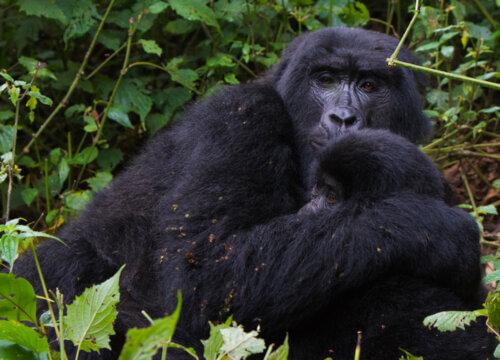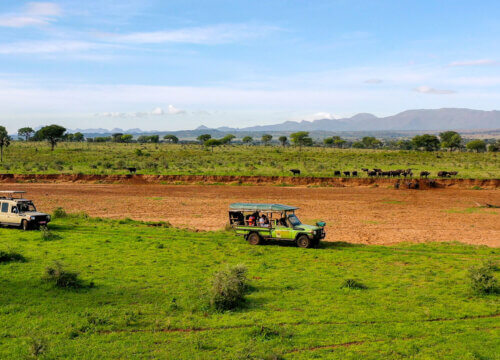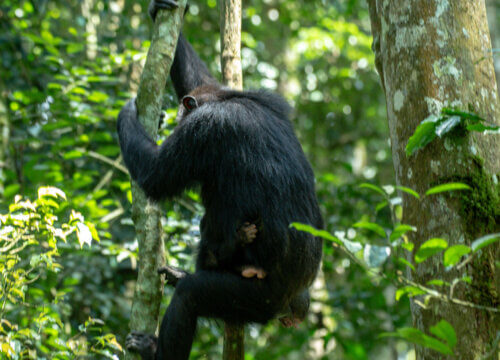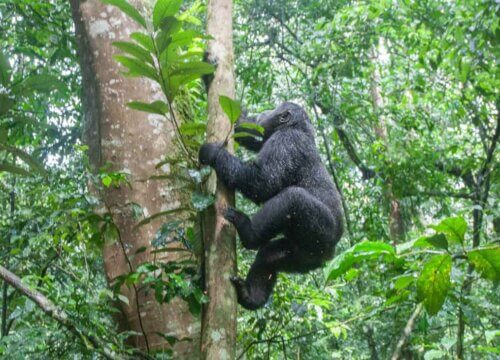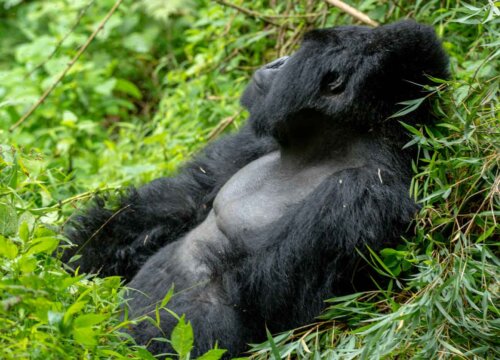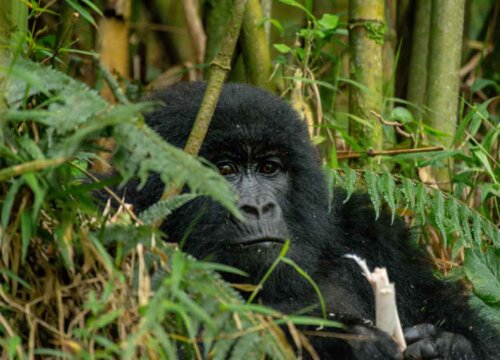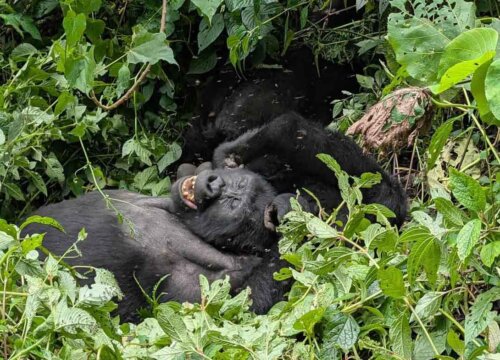Zip Lining in Mabira Forest
Zip Lining in Mabira Forest
Zip lining adventure in mabira forest begins with a safety briefing and being fitted with harnesses and helmets. Trained guides ensure that all equipment is secure before leading you to the starting point. The zip line consists of several platforms connected by steel cables stretching high above Mabira forest floor. As you sail from one platform to another, you will soar over streams, treetops and even catch sights of monkeys and colorful birds. The experience is both thrilling and calm as the rush of adrenaline is balanced by the peaceful beauty Mabira forest. Zip lining takes a maximum of 3 hours including nature walks, coffee and lunch breaks. Whether you are a tourist seeking adventure or simply trying something new, zip lining in Mabira Forest is a memorable activity that allows you to connect with nature in a truly unique way.
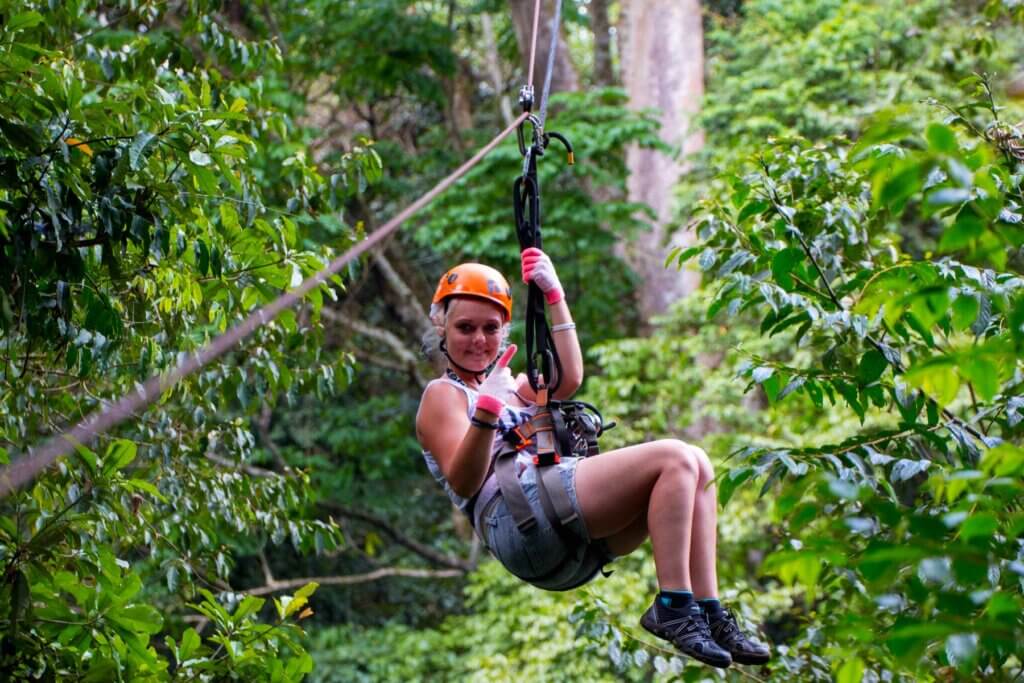
Zip Lining in Mabira Forest
Mabira Forest is a lush tropical rainforest in central Uganda. Spanning over 300 square kilometers, this natural haven is one of Uganda’s largest surviving rainforests and an important ecological treasure. It is home to diverse flora and fauna with more than 300 bird species including the rare Nahan’s francolin and the great blue turaco. It also shelters primates like the red-tailed monkey and the grey-cheeked mangabey along with countless butterflies and unique plant species.
How much is Zip lining in Mabira Forest?
The cost of zip lining in Mabira Forest usually ranges from 40 USD to 50 USD per person. This price often includes safety gear, a professional guide and an unforgettable experience gliding above Mabira forest’s towering trees. It is a small price to pay for the adrenaline rush and the chance to witness the beauty of nature from a unique perspective.
Is zip lining risky in Mabira Forest?
Zip lining through Mabira Forest, one of Uganda’s most stunning natural treasures, is an exciting experience that attracts adventure seekers from all over. The thought of soaring above lush greenery, listening to the chirping birds and feeling the rush of wind is undeniably exciting. But one question often comes to our minds, how risky is it? The good news is that zip lining in Mabira Forest is considered very safe provided you follow the rules and guidelines set by the operators. The activity is run by professional teams who prioritize safety above everything. They use high-quality equipment including harnesses, helmets and cables that are regularly inspected and maintained. Before taking off, participants are given a thorough briefing on how to use the equipment and what to expect during zip lining.
Of course, like any adventure activity, zip lining in Mabira Forest comes with some level of risk. These risks are generally minimal and can be lessened by adhering to safety instructions. For instance, always double check that your harness is secure before taking off and listen carefully to the guides’ instructions. It is also important to disclose any health conditions that might affect your zip lining experience such as heart issues or fear of heights. Mabira Forest itself adds an extra layer of reassurance. The zip lining routes are designed to showcase the beauty of the forest while maintaining a controlled environment. The platforms are comfortable and the guides are experienced in handling a variety of situations ensuring that every participant feels comfortable and secure. For tourists who still feel a little nervous, remember that thousands of people have safely enjoyed this activity in Mabira Forest. In case of any inquiries about the zip lining experience, contact Giant Holiday Safaris.
What to pack for zip lining in Mabira Forest
Zip lining through the lush Mabira Forest is an adventure you will never forget. To enjoy your experience, it is important to pack the right essentials. Here is a quick guide to help you prepare for this exciting activity.
- Wear lightweight, breathable clothes that allow easy movement. A moisture-wicking t-shirt and stretchy pants or shorts are best. Avoid anything too loose that could get caught in the harness.
- Pack closed toe shoes like sneakers or hiking boots for safety and comfort.
- Do not forget a good insect repellent to keep insects away because Mabira Forest is home to plenty of insects.
- Pack sunscreen to protect your skin from sun burns.
- Bring a lightweight backpack to store essentials like water, snacks and a rain jacket in case of unexpected rain.
- Pack a first aid kit in case of minor injuries.
What is the best season for zip lining in Mabira Forest?
The best season for zip lining in Mabira Forest is during the dry months which usually fall between December to February and June to August. During this time, the weather is more predictable with clear skies and minimal rainfall. This makes crossing the forest canopy safer and more enjoyable as the roads and platforms are less slippery.
How to reach Mabira Forest
If you are starting from Kampala, Mabira Forest is approximately 54 kilometers away making it about an hour’s drive along the Kampala-Jinja Highway. You can use private transportation or hire a taxi for convenience. Public buses heading towards Jinja also pass near Mabira forest giving you an affordable option.
For tourists coming from Entebbe, the drive takes about 1.5 to 2 hours via Kampala. Renting a car with Giant Holiday Safaris or using a ride service is a great way to travel comfortably while enjoying beautiful views along the way. Once you arrive, you will find several entry points with the main one being at Mabira Forest Eco-Tourism Centre.
Other activities in Mabira Forest
Nature walks and hiking
One of the most popular activities in Mabira Forest is exploring its numerous trails. With paths that wind through towering trees, vibrant greenery and streams, a nature walk here feels like stepping into another world. Along the way, you will encounter unique plant species, colorful butterflies and some of the forest’s resident monkeys.
Birdwatching
Mabira Forest is a birdwatcher’s paradise and a home to more than 300 rare bird species like the Nahan’s francolin and the African grey parrot. Guided birdwatching tours are available for those who want expert insights about these forest inhabitants.
Mountain biking
If you are up for some action on two wheels, Mabira Forest has mountain biking trails that cater to both beginners and seasoned cyclists. Ride through scenic routes surrounded by nature with the fresh forest air adding to the thrill of your journey.
Forest camping
For tourists who want to fully immerse themselves in the peacefulness of Mabira Forest, camping is an excellent option. Spend a night under the stars, listen to the soothing sounds of the forest and wake up to the singing of birds. It is a perfect way to reconnect with nature.
Environmental education tours
Mabira Forest also offers educational tours that highlight its ecological importance and conservation efforts. These tours are best for families, school groups or anyone interested in learning more about preserving our planet’s natural treasures.
Primate watching
Mabira forest is home to several primate species including red-tailed monkeys and vervet monkeys. Spotting these playful creatures in their natural habitat adds an extra layer of excitement to your visit
Explorer More Safaris
- 14-Days Uganda Safari Gorilla Chimpanzees and Wildlife
- 12 Days Gorillas and Chimpanzees Wildlife Safari
- 10 days best of uganda primates & wildlife safari
- 6 Days Gorillas and Chimpanzee Trekking Safari
- 3 Day Bwindi Gorilla Trekking Safari
- 4 Day Uganda Gorilla Trekking and Wildlife Safari
- 4 Days Gorilla Trekking and Adventure Safari
- 5 Days Uganda Gorillas and Chimpanzee Tracking Safari
- 4-Day Rwanda Gorilla Trekking and Golden Monkey Tracking Safari
- 5 Day Gorilla Habituation and Chimp Trekking
- 4-Day Uganda & Rwanda Gorilla Trekking Tour
- 3 Days Bwindi Gorilla Trekking Ugnada from Rwanda
- 10 Days Uganda Primates and Game Safari

